Nowadays, ventless dryers have become more popular, especially for those living in small apartments or homes without much extra space. How does a ventless dryer work and is it a good choice for your home? We did research to bring you the answers that you need.
A ventless dryer doesn't expel hot air like a conventional dryer. Instead, it recirculates air, recycling it and avoiding unnecessary energy loss. That's why ventless dryers have become all the rage in recent years. They're small, efficient, and convenient, making them a good choice for any home.
In this article, we will discuss in greater detail how a ventless dryer works and whether it's a good choice for a homeowner. Additionally, we will talk about the pros and cons of owning a ventless dryer, as well as the two kinds of ventless dryers that are available on the market. So continue reading to find out more.
What Is A Ventless Dryer And How Does It Work?
Unlike a regular dryer, a ventless dryer doesn't conventionally expel heat. Rather, it circulates heat throughout the entire machine. This process helps remove the moisture from your laundry while saving on energy.
However, a ventless dryer still requires you to take out the moisture that it collected, either with its water collection tank or through the use of a drain. This makes drying your clothes easier and more cost-effective experience.
Check out this dryer vent kit on Amazon.
Is A Ventless Dryer A Good Choice For Your Home?
If your home doesn't have enough space for a regular dryer, or if venting outside is a problem, then you should consider getting a ventless dryer.
For those living in an apartment, a rented space, or a small house in general, this machine will greatly assist you when it comes to drying your laundry safely while slashing your energy costs.
Even if you have a large space for a regular dryer, a ventless dryer can still be an enticing option. Many households in recent years have been shifting to ventless dryers, and with good reason.
As mentioned, ventless dryers are energy savers that take up little space in your home. With a ventless dryer, you can be sure that no lint in the air will cause respiratory issues for you and your family.
Check out this vent hose on Amazon.
Two Types Of Ventless Dryers
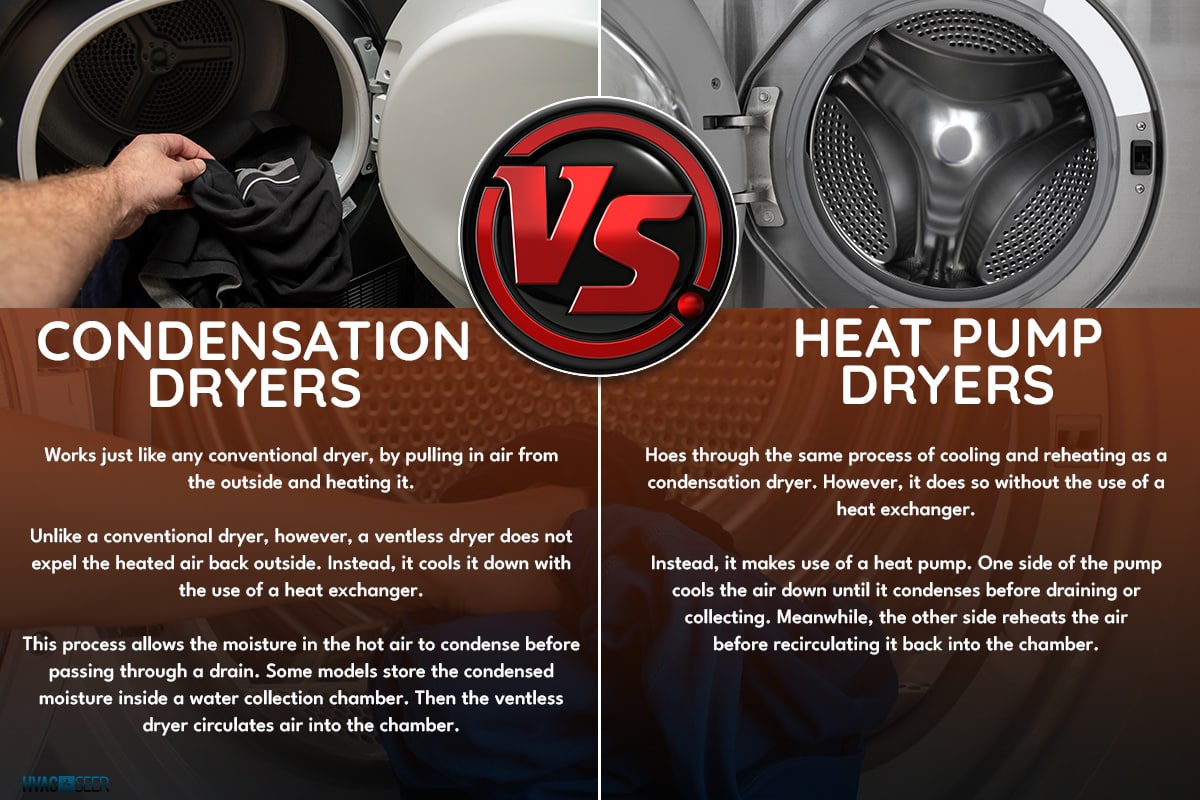
In this section, you will learn about the two most common types of ventless dryers. As you already know, a ventless dryer works by recycling heat, but the two types of ventless dryers go about it very differently:
Condensation Dryers
A condensation dryer works just like any conventional dryer, by pulling in air from the outside and heating it.
Unlike a conventional dryer, however, a ventless dryer does not expel the heated air back outside. Instead, it cools it down with the use of a heat exchanger.
This process allows the moisture in the hot air to condense before passing through a drain. Some models store the condensed moisture inside a water collection chamber. Then the ventless dryer circulates air into the chamber.
Once the air circulates inside the machine's drum, it picks up the moisture from the laundry. Then the process of cooling down and circulation repeats, thereby drying your clothes.
Check out this condensation dryer on Amazon.
Heat Pump Dryers
A heat pump dryer goes through the same process of cooling and reheating as a condensation dryer. However, it does so without the use of a heat exchanger.
Instead, it makes use of a heat pump. One side of the pump cools the air down until it condenses before draining or collecting. Meanwhile, the other side reheats the air before recirculating it back into the chamber.
Check out this heat pump dryer on Amazon.
What Are The Advantages Of A Ventless Dryer?
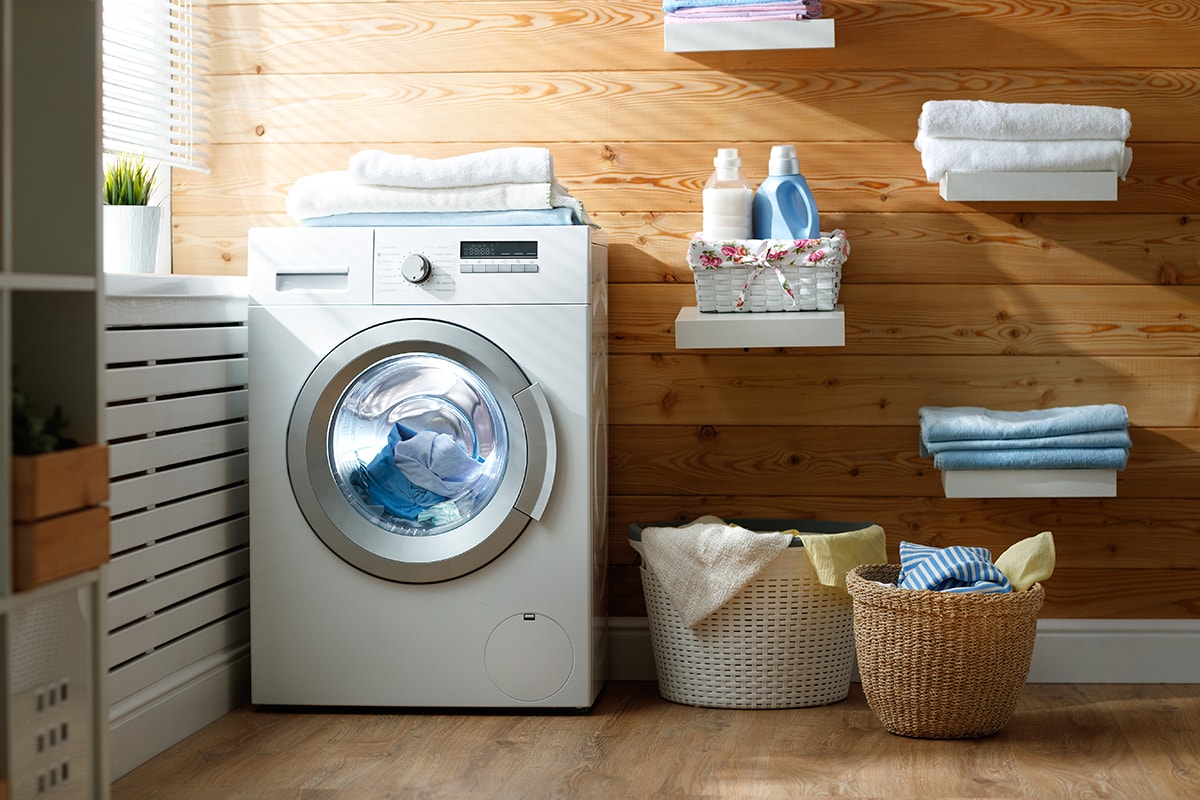
If you're considering owning a ventless dryer, then read on. This section will tell you all about the advantages that a ventless dryer offers over a traditional dryer.
More Versatility
As we already mentioned, a ventless dryer takes up little space compared to a traditional dryer. That's because it has a smaller drum and is more compact.
Additionally, it doesn't require you to vent a hose through the walls or ceiling. Because it doesn't release hot air and lint like a traditional dryer, you can easily place a ventless dryer anywhere inside your home.
Greater Efficiency
Because of the way a ventless dryer works, it offers more in terms of efficiency as opposed to a traditional dryer. Recycling the heated air into its drum repeatedly takes up less energy.
Ventless dryers only use around half the energy that a traditional dryer requires. That alone will save you money in the long run.
Ease Of Installation
Unlike a traditional dryer, where you need to install a vent through your walls or ceiling, a ventless dryer doesn't require you to do so. All you need is a small space to put your ventless dryer in and a nearby drain for the condensed moisture.
So all a ventless dryer requires is a power outlet and sufficient airflow around the machine. No matter how big or small you think the space in your home is, a ventless dryer is bound to fit.
Less Stress On Fabric
Because the smaller drum of a ventless dryer requires you to put less laundry inside of it, there's less stress on the fabrics. And a ventless dryer works with a lot less heat compared to a traditional dryer.
That means the ventless dryer has less of a tendency to overdry than its counterparts. Because the heat is not as high compared to a traditional dryer, your clothes are likely to experience fabric damage. This results in longer-lasting clothes and other similar items.
What Are The Disadvantages Of Using A Ventless Dryer?
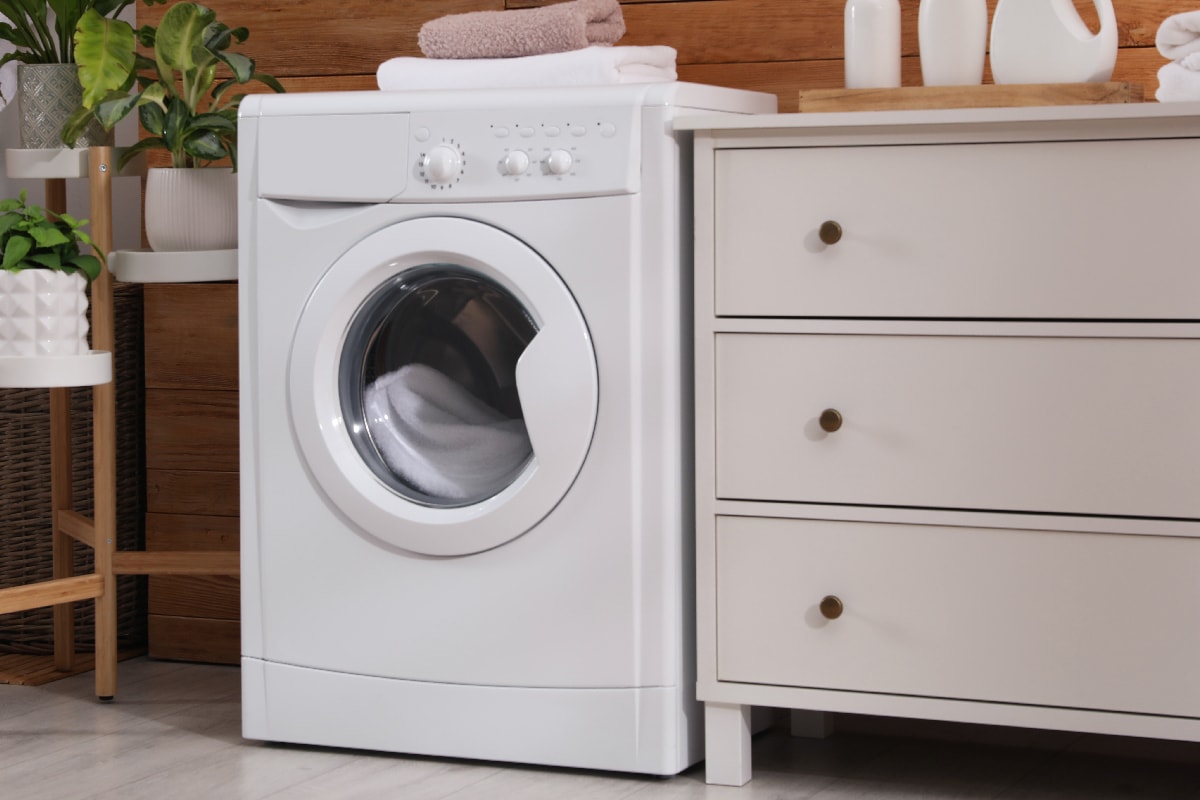
Now that you know what the advantages of using a ventless dryer are, it's time for you to weigh them against the disadvantages.
After all, no matter how helpful a machine is, there are always disadvantages that you need to be aware of. Ventless dryers are no exception.
Limited Capacity
A ventless dryer is more compact and space friendly. But because of its design, it can't handle big loads like a traditional dryer does.
Because a ventless dryer requires a smaller drum for it to be efficient, it will take you longer to dry your laundry. So if you have a lot of clothes that you need dry, it could take you at least twice the time to dry them as it would take with a traditional dryer.
Increased Humidity
Using a ventless dryer means increasing the humidity of the space around. While that seems like a small price to pay, ignoring it can cause problems in the long run.
Mold and mildew could start growing underneath and around the ventless dryer if you ignore the increased humidity it produces. That in turn can cause allergies and other respiratory illnesses to develop in you and your family members.
Longer Drying Time
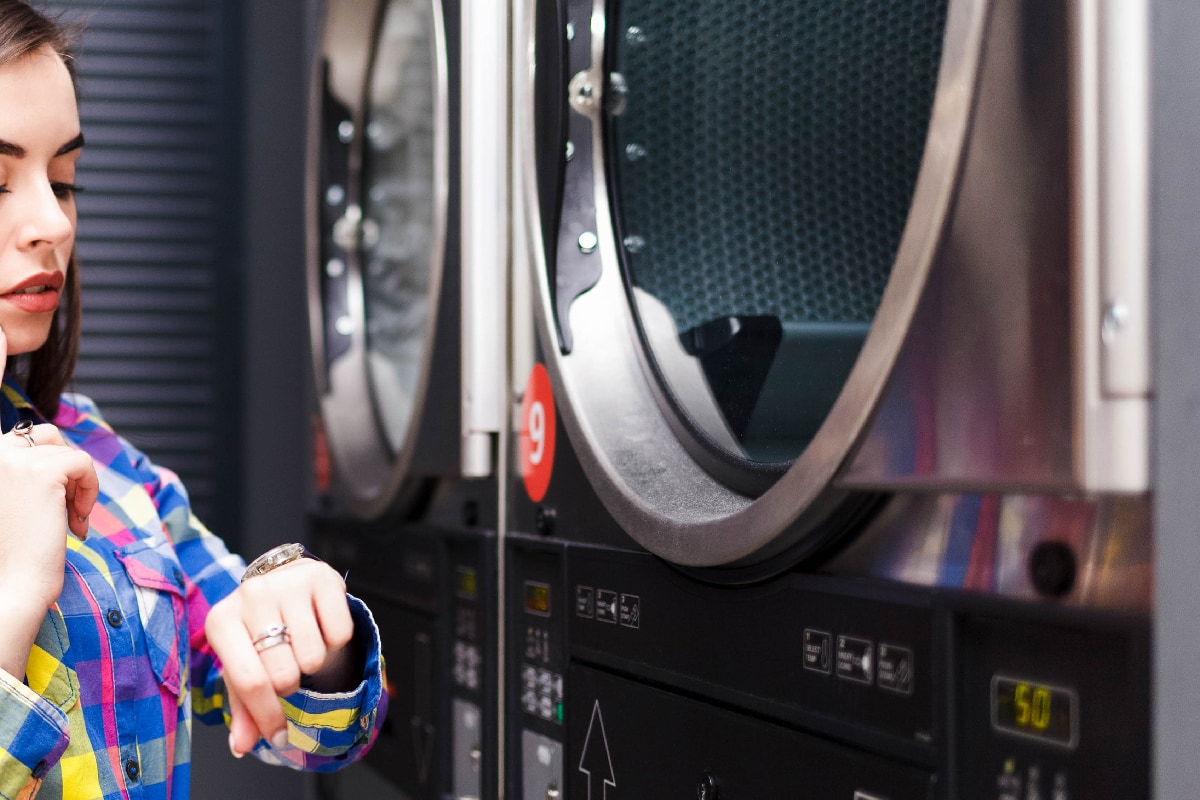
While a ventless dryer is efficient in its job, it does take a lot of time to work. It's one of the reasons why a lot of households tend to veer away them.
Some argue that the longer drying time means that you spend nearly as much as you would on a traditional dryer while having less to work with.
Bigger Investment
While a ventless dryer will help save you money in the long run, remember that it can cost a bit more than a traditional dryer.
So if you tend to move around a lot or you don't often use a dryer at home, owning a ventless dryer in some cases might not be worth it. That's why it's imperative to understand the needs of your home and family before making a purchase.
If you can see yourself using a ventless dryer regularly over a few years, then owning one is a no-brainer. If not, sticking to a traditional dryer or hanging your clothes outside are the best options for you financially.
To Wrap Up
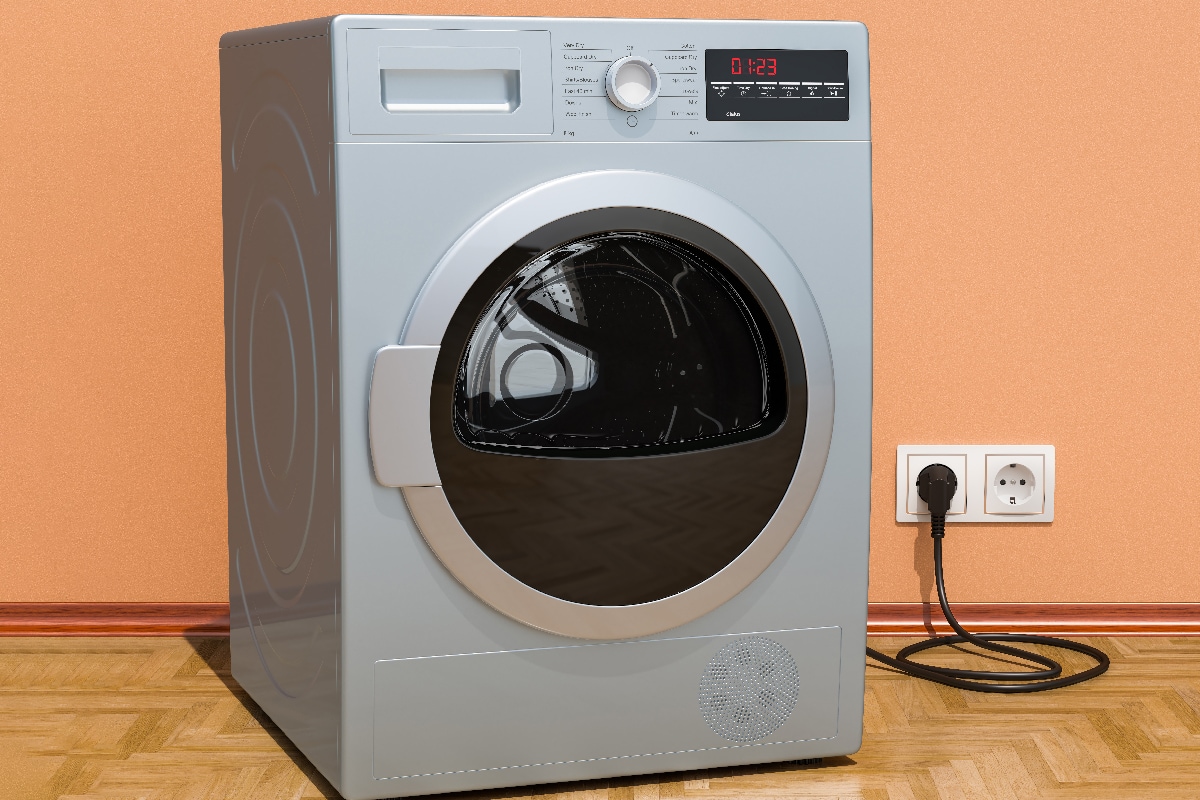
As stated in this post, a ventless dryer works by recycling heat throughout the drum instead of expelling it. This helps save energy and money in the long run.
Those two factors alone are good enough reasons for choosing a ventless dryer for your home. A ventless dryer is a space saver as well.
Did this article help you in figuring out whether a ventless dryer is right for you? If so, check out the related articles below.
Does A Laundry Room Need Ventilation? [Complete Dryer Ventilation Guide]
Can You Use A Dryer Without A Vent Hose?




